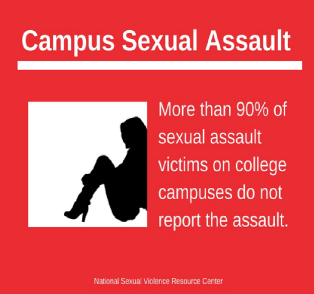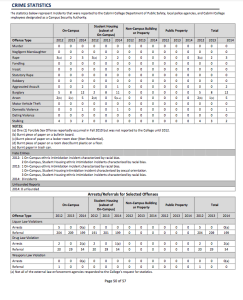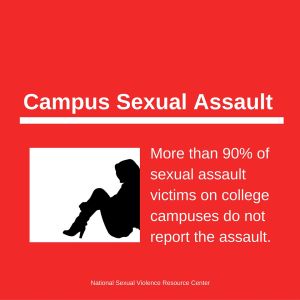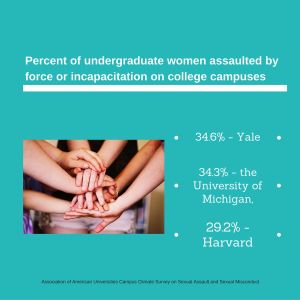
Did you know that college student’s aged 18 to 24 report about 526,000 violent crimes on campus every year? Of these crimes, the Violent Victimization of College Students found that 128,000 “involved a weapon or serious injury to the victim.”
Numbers such as these can be alarming to students and their parents, especially to new students who are taking on college for the first time.
Every year, Cabrini College releases a set of special reports on or before Oct. 1 that contains three years of campus crime statistics and certain campus security policy statements.
The Campus Safety Act, otherwise known as the Clery Act was designed to “assist students in making decisions which affect their personal safety” and “to make sure institutions of higher education provide students, prospective students, and faculty the information they need to avoid becoming the victims of campus crime.”
Crimes recorded in the report include murder, sexual assault, robbery, aggravated assault, motor vehicle theft, arson, stalking and domestic violence.
The Clery Act also requires colleges to include statistics concerning hate crimes, liquor law, drug law arrests as well as arrests for possession of illegal weapons.
According to the 2015 annual security report, in 2014 Cabrini College had three reported rape cases, two aggravated assaults, 12 burglaries, five arson cases and two stalking incidents.
While these crimes are still to be taken very seriously, these numbers are relatively low compared to other universities.
Many students such as sophomore English major Ryan Taylor feel this is because of the dedication of Cabrini’s Public Safety Officers.
“I have visited many college campuses that are large. In comparison to these colleges I feel as if though Cabrini’s campus is much safer and more secure. Walking home at night, it is rare to not see a public safety officer on patrol.”
Taylor is right. Compared to a larger university such as Penn State, crimes at Cabrini College are indeed less frequent.
According to lawstreetmedia.com forcible sex offenses are the biggest contributor to Penn State’s violent crime rate, making up over 70 percent of all reported crimes.
In 2013 the university reported its most shocking numbers yet with 119 forcible sex offenses and 39 aggravated assault cases.
According to Penn State sophomore and kinesiology major Samantha Kronenbitter, the numbers are not one bit surprising.
“We get alerts on our phones that tell us when these crimes take place and I get them fairly often,” Kronenbitter said. “I do think that they should put check in desks in each of the dorms to monitor whose coming in and out. Maybe that would help.”
Kronenbitter has however had a good experience with the public safety officers at Penn State.
“I do see safety officers walking around quite frequently,” Kronenbitter said. “The encounter I’ve had with officers have been good. They always respond quickly and they are friendly.”
Kronenbitter also had some tips that she uses in order to stay safe.
“Don’t walk around at night alone. When you go out, go out with friends and look out for each other,” Krottenbitter said. “Don’t drink excessively and always be aware of your surroundings.”
Cabrini College senior criminology, psychology and sociology major Mariel Delacruz had very similar advice when it comes to staying safe on campus.
“When I’m on campus and walking from Dixon over to east where my friend lives I’ll always let her know that I am starting to walk over,” Delacruz said. “It sounds a bit annoying but it is just for safety purposes.”
Delacruz has had the opportunity to work for the Norristown Police Department as an intern during her time at Cabrini where she has learned and observed a lot of useful information when it comes to personal safety.
“I think it’s important for both parents and students to read the campus report. Especially first year students since statistics show that first year students are at a higher risk of assault,” Delacruz said.
“It is important for students to know how at risk they are on their college campus and what some of the patterns of crime are so they can be aware.”




Yellow, Red and Blue graphic by Angelica Little


